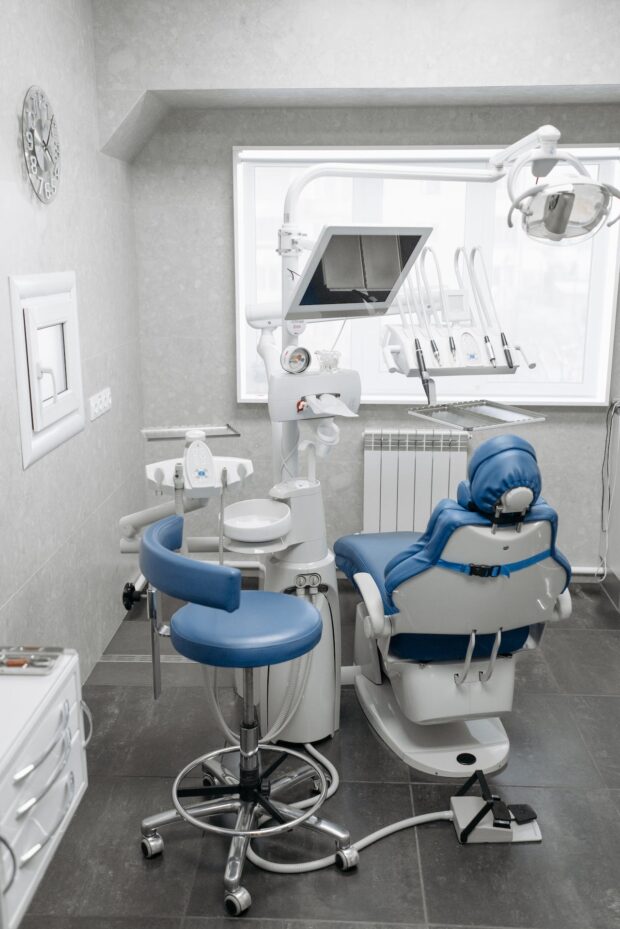
Cosmetic dentistry represents a specialized branch within the dental field, primarily focused on enhancing the aesthetic aspects of teeth, gingiva and the overall radiance of a smile. Although its core objective revolves around appearance, numerous cosmetic dentistry procedures extend beyond the superficial, imparting health benefits.
The increasing demand for cosmetic dentistry services reflects a growing awareness of the broader advantages offered by these practices. To gain optimal outcomes, individuals contemplating such procedures should engage in consultations with qualified dental professionals. This article assesses the various cosmetic dentistry procedures and their associated health benefits, emphasizing their holistic impact on oral well-being.
Teeth Whitening
Teeth whitening procedures are among the most sought-after in cosmetic dentistry due to their ability to lift discolorations and restore a vibrant, white luster to teeth. Employing various techniques such as the application of whitening agents like carbamide peroxide, light-activated whitening, at-home whitening kits and whitening toothpaste, these procedures enhance appearance and contribute significantly to overall health.
Beyond aesthetic considerations, teeth whitening aids in the removal of plaque and tartar buildup, mitigating the risk of dental decay and gum inflammation. A bright smile resulting from these procedures can positively impact an individual’s self-esteem, fostering a continuous cycle of maintaining healthy dental habits.
Dental Veneers
Dental veneers – thin custom-made shells of porcelain or dental composite – encase the frontal teeth, providing aesthetic enhancement with notable health benefits. They reinforce tooth structure, offer resistance to stains and involve minimal enamel removal, preserving natural integrity. Additionally, veneers act as a protective barrier, reducing sensitivity and decay risk, and promoting aesthetic improvement and long-term oral health.
Their versatility makes them a comprehensive solution, addressing cosmetic concerns while promoting overall dental well-being. With their ability to correct various imperfections, dental veneers stand as a versatile and enduring choice for individuals seeking a harmonious blend of aesthetics and dental health. This versatility extends to correcting misalignments, making veneers a practical choice for those desiring cosmetic enhancements and functional improvements.
Orthodontic Treatments
Orthodontic treatments – encompassing procedures like braces, clear aligners, lingual braces, retainers and palatal expanders – primarily address misalignments, malocclusions and irregularities in the alignment of teeth and jaws. While aesthetic improvement is the primary goal, these treatments contribute significantly to a healthier and more functional oral environment.
Correcting misalignments reduces spaces that could harbor plaque and bacteria, supporting gum health and preventing a spectrum of oral health problems if left unaddressed. Moreover, aligning teeth properly reduces hiding places for microorganisms, thereby reducing the risk of gum disease. Orthodontic treatments aim to establish a well-aligned bite, minimizing the risk of abnormal wear on tooth surfaces and contributing to improved speech articulation and efficient biting and chewing.
Dental Implants
Dental implants represent an effective solution for replacing missing teeth; the loss of a tooth can lead to the gradual deterioration of the underlying jawbone, resulting in changes to facial structure. Dental implants function as artificial tooth roots, actively stimulating the jawbone and thwarting bone loss; this addresses aesthetic concerns while safeguarding the long-term health of the jaw.
The prevention of jawbone deterioration ensures the preservation of facial contours and minimizes the risk of associated health issues. Moreover, dental implants contribute to improved oral functionality by restoring bite strength and enhancing the ability to chew and speak. This functional restoration extends beyond aesthetics, positively impacting an individual’s overall oral health and quality of life.
Composite Bonding
Composite bonding involves the application of a tooth-colored resin material to restore or improve the aesthetics of teeth. This procedure, while primarily cosmetic, offers substantive health benefits; beyond its cosmetic advantages, composite bonding preserves the natural tooth structure, allowing dentists to repair teeth with minimal alteration. This approach helps maintain the strength and integrity of teeth, preventing further tooth decay and minimizing the likelihood of more extensive dental problems.
In addition to its restorative properties, composite bonding promotes optimal oral hygiene; its smooth and non-porous surface reduces the likelihood of plaque and tartar accumulation, contributing to a healthier oral environment. This preventive aspect underscores the dual role of composite bonding dually in cosmetic enhancement and long-term oral health maintenance.
Concluding Insights
Cosmetic dentistry transcends its primary focus on aesthetics to emerge as a holistic approach to overall health and well-being; the escalating demand for these services underscores the recognition of the broader benefits they confer. Each cosmetic dentistry procedure brings unique advantages; however, the overarching theme is the promotion of oral health. As advancements in technology continue to shape the field, cosmetic dentistry is poised to evolve further, solidifying its place as an integral component of comprehensive dental care.
The continuous integration of cutting-edge technologies and research-driven innovations promises to enhance the precision and effectiveness of cosmetic dentistry, ensuring that individuals achieve aesthetic improvements while experiencing enduring oral health benefits. This evolution aligns with the evolving landscape of dental care, fostering a symbiotic relationship between cosmetic enhancements and the holistic well-being of dental patients.
